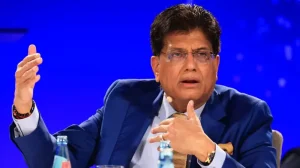WASHINGTON, D.C. — The United States has decided not to immediately supply Ukraine with long-range Tomahawk cruise missiles following a high-level meeting between President Donald Trump and Ukrainian President Volodymyr Zelensky at the White House on Friday, according to officials familiar with the talks.
Both sides confirmed that no agreement was reached on the transfer of the missiles. President Trump said the decision reflected Washington’s effort to avoid escalating the war, noting that sending such powerful weapons could raise the conflict to a new level.
“We talked about long-range weapons but agreed not to discuss the details publicly because the United States doesn’t want to expand the war,” Zelensky said after the meeting.
According to CNN, Zelensky returned to Kyiv without securing any major new military commitments. His visit to Washington focused on obtaining stronger defense support — especially Tomahawk missiles — as Russia intensifies its attacks.
Zelensky has argued that the missiles would give Ukraine the ability to strike key Russian energy and infrastructure sites, potentially forcing Moscow to the negotiating table. Trump, however, insisted that the threat of the weapon itself could be enough. “The fear of that weapon is often enough,” he said, expressing hope that it would never have to be used.
During the meeting, Zelensky reportedly suggested offering drones in exchange for Tomahawks — a proposal Trump greeted with a smile and a nod, according to BBC reports.
Before meeting Zelensky, Trump had spoken by phone with Russian President Vladimir Putin, who urged the U.S. not to provide Ukraine with advanced missiles. Putin reportedly warned that such a move could derail ongoing peace efforts. When asked later if Putin was sincere about peace, Trump said, “I’m not sure, but Russia is clearly worried about Ukraine possibly getting Tomahawks — they know how powerful those weapons are.”
Although no deal was finalized, CNN reported that discussions on additional U.S. military assistance would continue. Trump and Putin are expected to meet again in Budapest within two weeks, a factor analysts say may have influenced Washington’s decision to hold off for now.
Tomahawk Cruise Missile: Range, Precision, and Power
The Tomahawk remains one of America’s most reliable precision-strike weapons, valued for its long range, accuracy, and ability to fly at very low altitudes. First used during the 1991 Persian Gulf War, it has since been deployed in conflicts across Iraq, Afghanistan, Syria, and Yemen.
Each missile can hit targets up to 1,000 miles (1,600 kilometers) away, flying at about 550 miles per hour (885 kilometers per hour) — roughly 70 percent of the speed of sound — while staying only about 30 meters above the ground, making it difficult for radar to detect.
Tomahawks are typically launched from naval ships or submarines. A booster motor lifts the missile into the air before a small jet engine takes over, guiding it through terrain maps and GPS coordinates toward its target. Newer versions can even change targets mid-flight.
Each missile carries a warhead equivalent to about 400 pounds of TNT, capable of destroying major military or infrastructure targets. Some variants can deploy submunitions, while others can disable power grids using carbon-fiber filaments.
With each missile costing between $800,000 and $2 million, the Tomahawk is used mainly against high-value strategic targets. The U.S. still holds thousands in stock, but production has slowed, and inventories are declining — one reason why Washington is cautious about transferring them abroad.
Balancing Military Support and Diplomacy
Friday’s meeting highlighted Washington’s challenge of supporting Ukraine’s defense while avoiding a direct confrontation with Russia. Supplying long-range strike systems like the Tomahawk could change the course of the war, but it also risks further escalation and diplomatic fallout.
For now, the U.S. has chosen to take a cautious approach — continuing military cooperation and diplomatic dialogue without committing to such a major weapons transfer. Analysts say the move reflects a broader U.S. strategy: helping Ukraine defend itself while working to prevent the conflict from spreading into a larger regional war.






